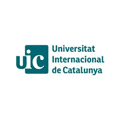Studies & Degrees in Primary Education
Choose where you would like to study Primary Education:
AustraliaBoliviaCanadaChileChinaColombiaEgyptGermanyGreeceGuatemalaIcelandIndiaNamibiaNew ZealandPeruPolandPortugalSpainThe United KingdomThe United StatesPrimary Education Study Programs
International University of Catalonia
What is primary education?
Primary education, or elementary education (as it is also often referred to), includes the first stages of a child’s education. In most educational systems around the world, education is divided into primary and secondary, whilst in some countries there is a transitional period, called ‘middle school’. Therefore, elementary education includes the first six to eight years of a child’s education. Children usually enter this stage of their life at the age of five or six, but this can vary between countries and educational systems.
Primary education equips students with basic skills and gives them some initial understanding of various subjects. It provides students with the educational background they need to proceed to secondary school, and possibly higher education. The subjects taught in primary schools include Math, Science, Language Arts, History, Geography, Art, and Music – all providing basic knowledge and skills like reading, writing, spelling, and concentration that the child can use throughout their lifetime.
What are the skills acquired?
It is not a coincidence that primary education is compulsory in almost every country around the world. This is the period of a child’s development when they acquire crucial skills, some of which we already mentioned. On top of them, children in primary education learn how to interact with each other, how to communicate and demonstrate tolerance and respect towards their peers. They also start forming good study habits like time-management, organizing their school materials, planning for assignments, and taking tests.
What are the tools applied?
Since children enter this stage of their life at a relatively young age, teachers have to be extremely creative in keeping the attention of students. They have to engage them and make learning a fun, productive, and pleasant experience. This is why the variety of tools applied in primary education could be vast, and usually includes games, artwork, movies, books, and computers. Children are often encouraged to apply their imagination in order to fully perceive and understand the ideas and concepts presented to them.
What are the types of schools in primary education?
Most countries ensure that children receive free primary education. This is why the most common type of primary schools are the state schools. They usually receive funding from local authorities and accept both boys and girls (although there may be single-sex primary schools in some countries and regions).
Another type of primary education schools are community schools. They are usually run by a local authority that owns the building and land, employs the teaching staff, and decides on the admission criteria for students. This type of primary education schools seek to develop a close relationship with the local community, offering their facilities and providing services like childcare and adult learning classes.
Independent schools are typically private schools, funded by fees paid by parents and by income from investments. They set their own curriculum and admissions policies.
Here it is worth mentioning that there are other types of schools, caring for the families’ ‘special needs’, like bilingual primary schools, online primary schools, and schools for children with special needs – both children with specific diseases, and such that demonstrate outstanding intellectual qualities and results. Bilingual primary schools are often designed for expatriate families who wish their children to be educated both in their mother tongue and the language of the country where they currently reside. Online education has been growing in popularity in recent years and it provides the flexibility and freedom that few other options can offer. In any case, the choice of primary education institution is crucial for the child’s future development and should be taken with thought and care.


